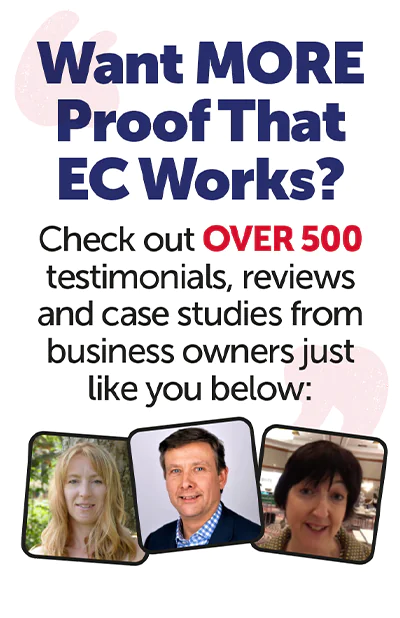
This month’s Big Marketing Lesson comes to you courtesy of National Entrepreneur Award Winner, David Browne. David has been an EC member for almost three years and in Nigel’s Mastermind group for two. During that time, the progress he’s made with the family-owned Scottish Shutter Company, based near Dundee has been remarkable and, in this article, he shares one of his biggest secrets.
One of the great challenges these days is communicating effectively with clients and prospects. Email is widely used because it is quick and easy and, of course, incredibly cheap. But it has its own challenges. Just looking at my own inbox there are over 1,550 unread emails. No doubt amongst them will be correspondence from companies wanting to sell me something and the chances of them getting my attention, let alone me reading their email, is close to zero.
Now, we are great users of Google Adwords and our PPC campaigns form a large part of our prospecting but as soon as we get a lead we move over to direct mail for communicating with our prospects. And I have to tell you, it works really well.
I recently saw a piece that said that, due to increasing post costs, fewer companies are sending mail. Well I reckon that’s good news for us smart marketers as it means there’s a lot less competition for the space on people’s doormats. In fact, it gets better because it’s a fairly safe bet that a lot of what comes through your prospects’ letterboxes is easily recognisable as either bills or obvious junk mail. Those ‘obvious’ pieces of marketing herald their content by simply having text on the outside of the envelope, which describes exactly what the offer is, inviting the recipients to open now or else there are other similar clues that make it crystal clear exactly what’s inside. I don’t know about you but I tend to not open the stuff that looks like it’s selling me stuff, which is why we’ve adopted a somewhat different approach.
The way we tackle direct mail has given us really high open rates, way, way higher than anything we could ever expect from email. Here’s what we’ve done:
It goes without saying that the piece inside the envelope, whether it’s a short form (a double sided A4 for example) or a long form (eight or sometimes 12 pages), must be well written and compelling. In that regard, we use Nigel’s ‘Writing Really Good Marketing Copy Checklist’ (which you can download in the Vault) to make sure that we’ve covered everything. What’s great is that we’re not constrained, as we are on Google, by 25 character headlines, etc. We can take as long as we like to set the scene, tell a story or two and provide testimonial proof – as long as what we write is engaging and interesting for the prospect. We make sure it is.
But of course, it has to get opened first so we go for a brightly coloured envelope – as modelled by the EC. I have to say, it works very, very well. Our favourites are blue, green or yellow but the thing that really matters is that they are very bright and that they’ll standout on the doormat.
The name and address MUST be handwritten. Why? Because no direct marketing company that mails out millions of pieces can ever expect to have a handwritten envelope and we don’t want to be seen on the door mat as a direct marketing company. We want people to think this is a personal message to them – because it is – which is why we do the hard work that makes the selling easier.
We also use proper stamps – again, no marketing company, sending out lots of pieces has the time to stick on real stamps and, if we’re honest, neither do we. But we always make the time to do this properly and we try to get hold of the latest commemorative stamps as well because they make the envelope look even better as they’re usually brightly coloured and bigger than a normal stamp. It’s just another way to get attention because our first aim is to ensure that the letter gets opened. If no one opens your piece then the whole exercise is pointless. Just because we’ve written it does not mean that it will get read – we never make that assumption.
Once they’re into the envelope (which we reckon pretty much every one of ours is) they’ll find a nicely crafted piece, designed to be very engaging. There’s no instant delete button, so the piece stands a much better chance of being read compared to an email.
Oh, one more thing about the stamp – it needs to be first class. It says a lot about your company if you’re sending things out second class. Think about it. So brightly coloured, handwritten envelopes with nice commemorative stamps look inviting and get opened – often out of curiosity if nothing else.
We send our direct mail out on a Friday. Why? Well, because the piece then lands on the doormat at the start of the weekend when people have much more time to read their mail.
All this sounds great, but one of the key elements of successful direct mail is that you send it to the right people in the first place.
We used to send our quotes out by email but now we send them by direct mail, again in a distinctive envelope with the usual handwritten name and address and commemorative stamp. With the quotes we also hand write a nice message on the outside back of the envelope [insert picture] to further enhance the personalisation. We still send an email, but now merely to tell the recipient to watch out for the postman bringing their quote by hand. This makes us standout because, while our competitors simply email quotes, we know that are nothing like as good or impressive as ours.
As I said earlier, postage costs are rising and I know that one objection that a lot of business people use is that direct mail is expensive compared to free email marketing. “However, one really great thing about direct mail is that it is absolutely trackable and measurable – you can tell without a shadow of a doubt exactly what return you got on your spend. Here are some of our
etrics: In March this year we sent out a direct mail piece to 364 previous clients. These were people that had ordered from us two or more years ago. Yes it was a lot of work to handwrite 364 names, addresses and postcodes but the cost for everything was £114. The postage was £218.40, making a total spend of £332.40. Within two weeks of sending it out we had over £50,000 in orders, including one order for £4,500 when the client already had a competitive quote for just £465 – however that’s more a testimony to our upselling skills than the direct mail piece itself.
That’s a return on our investment of over 15,000%.
“Now, even if the cost of stamps was to quadruple, along with the printing then we’d still have a return in excess of 3,000% so I’m still voting for direct mail here – when you send stuff to the right people.
We use Infusionsoft to run our business but instead of setting up email sequences we use the CRM to trigger the despatch of a series of eight postcards – each one highlighting something that we do better than any of our other competitors. These go out in a sequence (much in the same way that all 20 emails go out) but we take the time and trouble to handwrite the names and addresses, stick on commemorative stamps and walk to the post box.
Yes, it does take more time than simply sending emails on autopilot but it’s another example of doing the hard work that makes the selling easy. Each of these postcards invites the client to either call or email or drives them to a specific landing page, which replicates the content of the postcard with a detailed form, which they then complete and send to us. Again, all this feeds straight into Infusionsoft and it’s serving us very, very well.
I know Nigel has been teaching us the virtues and benefits of direct mail for a long time now but I wanted to take a little while just to capture exactly how well it works for us and what a massive difference it’s made to our business. Hopefully other EC members will feel able to deploy it as well.


